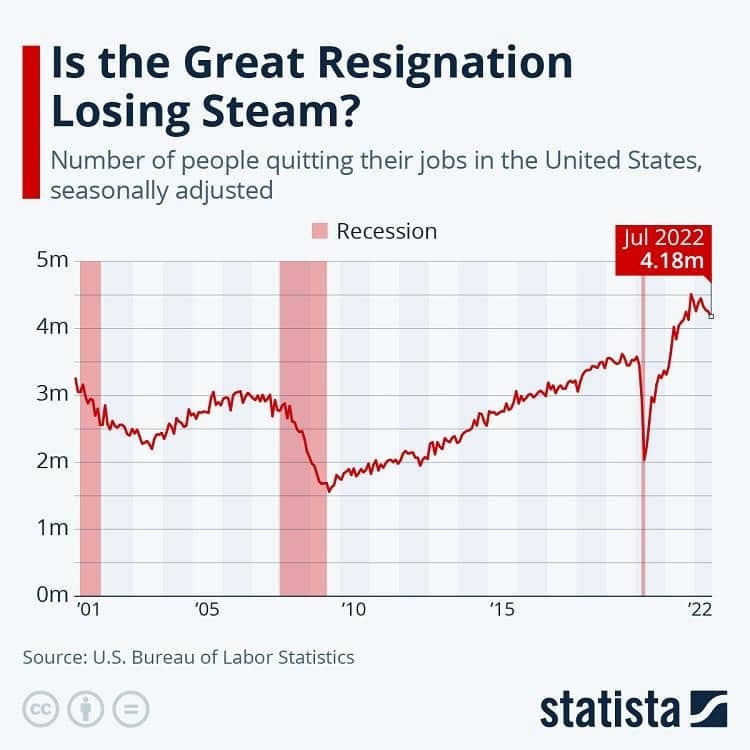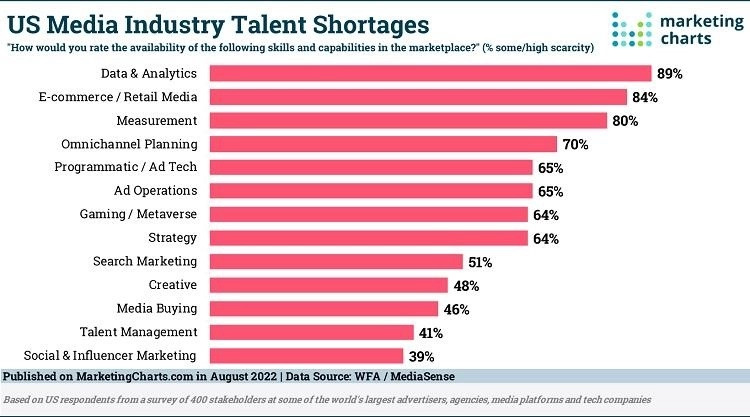What Job Candidates Are Actually Looking for in Their Future Employer
Are you struggling to find the right employees to fill open positions? The Great Resignation has impacted nearly every industry, making it harder for managers to find qualified candidates. If you don’t hit all the right points, the highly qualified workers will likely head to a competitor for a job.
How can you know what candidates are looking for? After all, it can vary by the age of the person, living situation, and even geographic location. While there are some rules of thumb you can turn to, it’s also important to do your own research and find out what people in your industry expect.
You should not only meet employee expectations but find ways to go above and beyond. Look for perks you can offer that no other company does.

What Are Job Candidates Looking for in an Employer?
The Bureau of Labor Statistics reports 11.2 million job openings for September 2022. Many experts are surprised at the lack of movement in the employment statistics, expecting job openings to start filling up.
One of a couple things might be happening. First, many people who were laid off or left positions during the height of the pandemic may have decided to open their own businesses. Second, quite a number of workers turned to the gig economy, choosing to freelance or pick up work via companies such as Uber, Lyft, Instacart, or DoorDash.
There is some hope. The number of Americans leaving positions dropped in July. However, numbers still remain at a historical high of about 4.18 million parting ways with their employers.
Many workers no longer want to punch a time clock or spend their time and energy building something for another person. Figuring out how to attract the smaller pool of candidates who do want a full-time position isn’t an easy task. Some industries find it almost impossible to get people to work and stay with their company. Fast food and other service industries have been particularly hard hit.
Here are the benefits potential employees may be looking for and how you can capitalize on them, even if you’re a small business with limited resources.
1. Competitive Pay
At the top of most people’s lists is competitive pay for the work they do. No one wants to put in 40 plus hours a week for an amount that won’t even cover their expenses. The days of people working two or three jobs might be numbered. Young workers aren’t willing to play the game. They’ll live on less and take gig jobs instead.
How can you keep up with the big corporations that can pay more, though? If you raise prices too high, you risk losing loyal customers. If you don’t pay enough, you risk losing customers because you can’t offer them quality services.
Crunch the numbers and figure out how much you can afford to pay each worker. Are there things you’re wasting money on that you can do without? How about those catered lunches for executive business meetings? Maybe cut the bottled water cooler delivery. You’d be surprised how much you spend on unnecessary things.
Competitive pay is about more than just a one-time offer, though. Workers also expect raises to help them keep up with the increasing cost of living but also improve their quality of life. As your revenue increases, your employee’s salaries should also increase on a set schedule.
2. Remote Options
The pandemic also shifted the way we look at remote work. By the year 2025, an estimated 36 million employees will work from home for at least half of their productive hours.
Many employers saw the advantages of having less office space and fewer costs while employees worked remotely. However, employees also saw how they could save time and money on commuting to and from the office. They also saved on costs of things such as grabbing a coffee on the way to work, eating lunch out, and having to get carryout for dinner because they arrived home so late.
Those who’ve had a taste of remote work or hybrid-remote positions no longer want to spend 40 hours or more in an office. The position they choose to take may be dependent on whether they can avoid driving to and from work. Think of all the time spent waiting in traffic and driving that they could spend on other tasks. It’s easy to see why remote positions are growing in popularity.
Unless you run a business in the service or manufacturing industry, there are a few reasons you shouldn’t allow your workers to do their tasks at home at least part of the time. During the pandemic, some manufacturers even let their employees take parts home and work on tasks there.
3. Paid Time Off
Job candidates also look at how much paid time off (PTO) they have. One week of vacation isn’t very attractive. Two should be a minimum. However, most employers are starting to realize the value of a well-rested and refreshed worker.
A few companies have gone to as much PTO as you need. However, such a perk can become a nightmare if you hire the wrong employee. Most people will be reasonable with what they request, but there’s always one. You have to offer what you feel comfortable with so think through all the scenarios and choose the model that works best for your brand.
You should offer most major holidays as paid ones. If it’s a bank holiday, then your employees should be off. Of course, there are some businesses that require you to be open 24/7/365. Keep in mind that even grocery stores close on Christmas Day and most places close early for Thanksgiving.
4. Work/Life Balance
Another thing workers are demanding after years of accepting sub-par pay and poor working conditions is a better work/life balance. If your employees are salaried, don’t expect them to work eight hours and then answer questions via text the rest of the evening.
You’ll wind up with burned-out staff and people will quit as soon as they get another opportunity. Your employee churn rate will rise to unmanageable levels if you aren’t careful. People have families, pets, and friends. They don’t want to be tied to a job around the clock.
Even the rare workaholic who doesn’t “mind” is going to eventually burn out without any balance. Creative types may particularly be in high demand.
Media talent seems to be one of those areas where there is a greater employee shortage. Around 89% of agencies report a shortage of workers who are knowledgeable in data and analytics, and another 84% had a hard time finding candidates with knowledge of retail media.
5. Mental Health Breaks
Do you give your employees a way to decompress when their job gets to be too much? Even the most pleasant work environment is stressful at times. Your workers will be happier and better adjusted if you give them the opportunity to take a mental health day when they need it, offer access to counseling, and watch for the signs of overt stress.
Some workers have an ongoing struggle with mental health issues, so be aware of who in your company struggles. Some people feel stress stronger than others, so have a quiet space where they can get away or work on an alternative schedule that creates less stress for them.
6. Company Culture
Does your company have a strong culture that attracts rather than repels? What do your employees tell others about where they work? Do they love the attitude and how much you care about your employees? If not, you may have some work to do.
Company culture isn’t something you can fix overnight. You must first figure out what you want it to be. Once you have some goals for your brand, work alongside your employees to build a company others admire. Stick to your standards and the right candidates who fit your ideals will be attracted to your company.
7. Healthcare
Many job candidates need health benefits and they pay attention to what they’ll have to pay out of pocket. Do your research and find out what the best plan you can afford is. How much will your workers have to pay to upgrade? Can they add on a spouse and children for an affordable weekly rate?
Understand that different employees may have different plan needs, so look for a company with flexibility. The healthy 20-something may only need catastrophic insurance, while the 30-something single mom with children may need something that covers wellness and more in-depth procedures.
Don’t forget vision and dental care. Your plan should also include something for mental health. If you’re too small to afford good insurance for your employees, try to see if there is a small business group where businesses go in together to get a better rate.
8. Perks
Don’t overlook those unusual perks you can offer your employees that the bigger corporations don’t. For example, give a travel stipend for enjoyment of their PTO and let them go anywhere they might like.
Give them a paid day they can volunteer at the charity of their choice. Doing so benefits your local community and also allows your employees to participate in something they care about.
Bring in food trucks for lunch. Throw an after hours party just for fun. Give out gift cards as thank yous for finishing a project early. Look for ways to reward and appreciate your employees so they know you care about them. Your best goal is to keep the excellent workers you have so you don’t have to worry about finding a new candidate and training them.
Ask Your Interviewees and Workers
To really understand what people want from an open position, take the time to ask. Talk to current and former employees about what they like and dislike about their job. What perks could you add to make the role more attractive?
The better you understand your typical employee, the more you can offer that will attract like-minded people. Make the question of what the person wants from an employer part of your interview repertoire. You can even customize your offer package based on how your top choices answer.
Sell more, understand your customers’ journey for free!
Sales and Marketing teams spend millions of dollars to bring visitors to your website. But do you track your customer’s journey? Do you know who buys and why?
Around 8% of your website traffic will sign up on your lead forms. What happens to the other 92% of your traffic? Can you identify your visiting accounts? Can you engage and retarget your qualified visitors even if they are not identified?




